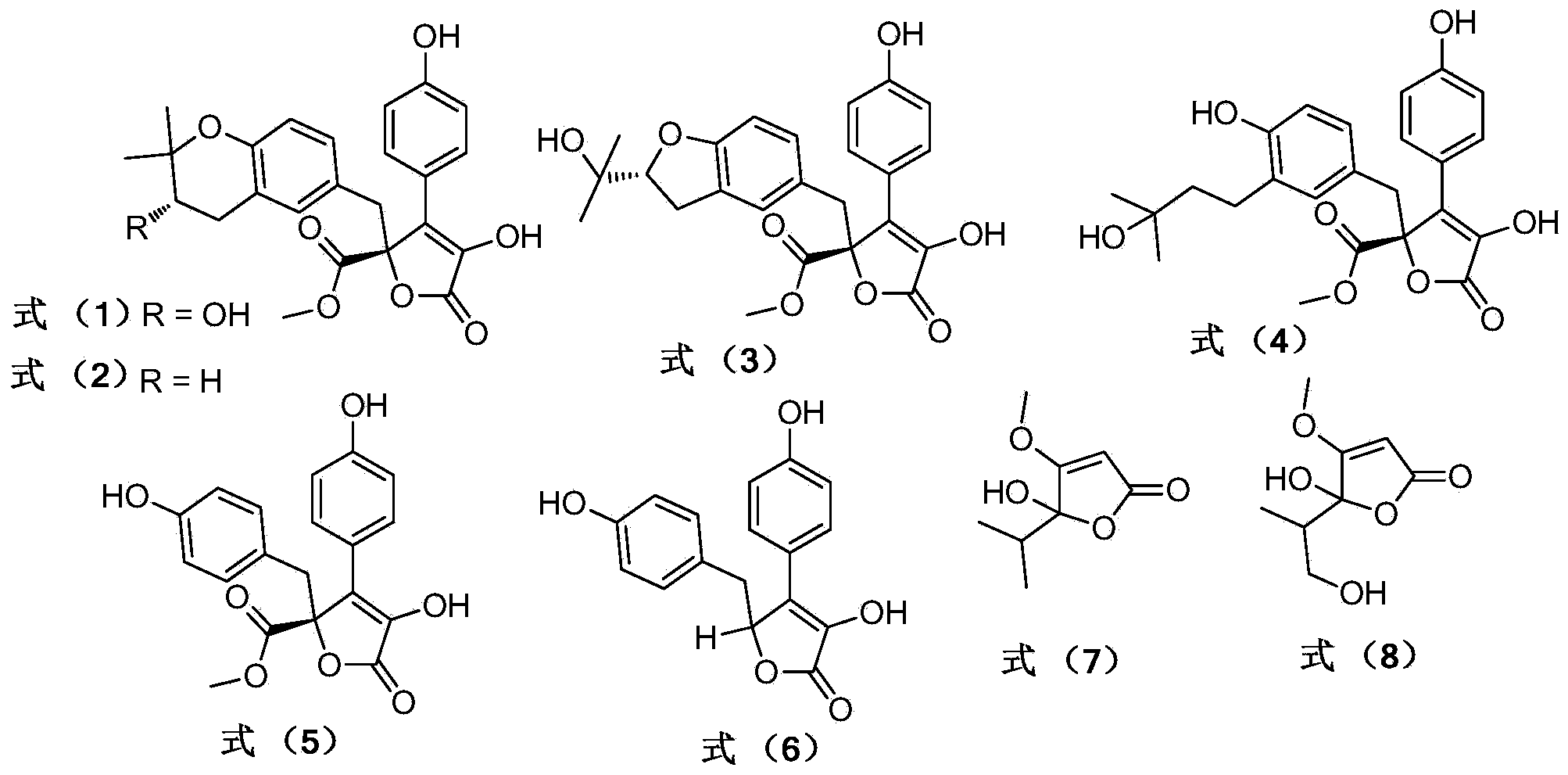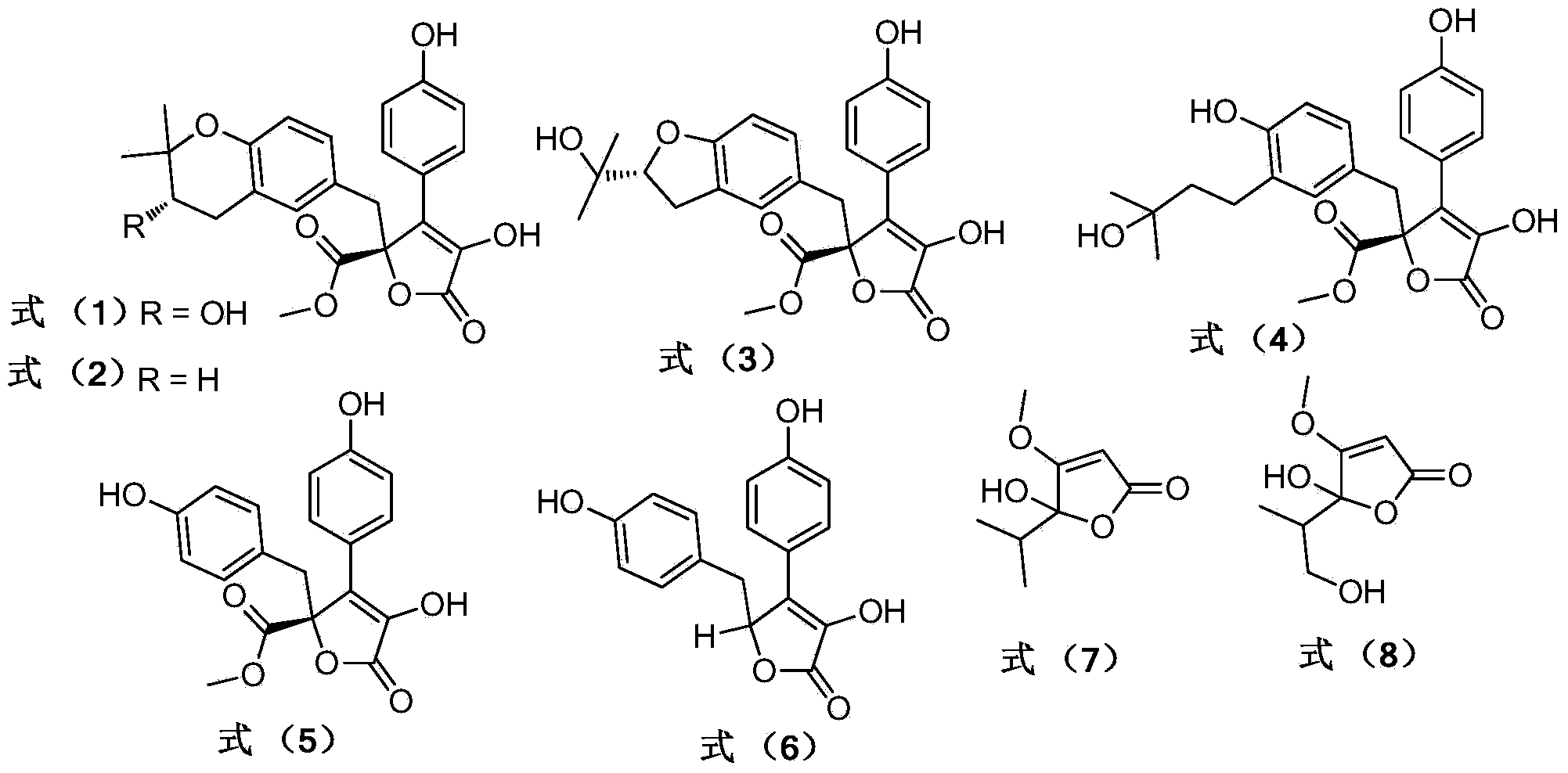Application of class of butenolide compounds in preparation of marine biofouling prevention coating material
A marine biofouling, butenolactone technology, applied in antifouling/underwater coatings, biocide-containing paints, coatings, etc., can solve problems such as low release rate, affecting embryo growth, and destroying ecological balance. , to achieve good lipophilic effect
- Summary
- Abstract
- Description
- Claims
- Application Information
AI Technical Summary
Problems solved by technology
Method used
Image
Examples
Embodiment 1
[0016] Embodiment 1: the anti-marine macrofouling biological barnacle larva attachment test of the butenolide compound represented by formula (1)-formula (8)
[0017] The activity test model is the attachment inhibition test of barnacles larvae (Barnacles larvae), one of the most commonly used marine fouling biological models in laboratories. Adult barnacles feed on Chaetoceros gracilis Schutt, and culture barnacle nauplii to Venus larva stage in 0.22 μm filtered seawater, with 2 larvae per ml at 28°C. Activity tests were carried out with the resulting Venus stage larvae. Anti-larval settling activity of compounds was determined using 24-well polystyrene plates. The compound butyrolactone V (Formula 1) was dissolved in DMSO and diluted with sterile filtered seawater to obtain solutions of different concentrations (60–140 μg / mL) as test solutions. Add 1mL test solution and 20±2 mature barnacle larvae to each well, set 5 replicate samples for each concentration, and sterile fi...
Embodiment 2
[0020] Embodiment 2: the wild sea siding activity test of the butenolide compound shown in formula (8)
[0021] The field sea hanging board test adopts the traditional anti-fouling biological field sea hanging board test method. 0.2g and 0.4g of the butenolide compound shown in formula (8) were completely dissolved with 1mL of methanol, then fully mixed with 10mL of resin containing 45% polyurethane and spread on dry PVC (10× 10×0.3cm) board, air-dried and hung in the scallop breeding sea area of Daya Bay, Shenzhen (114°32'59 east longitude, 22°40'37 north latitude). The PVC containing 0.2 g of the butenolide compound represented by the formula (8) was regarded as treatment group 1, and the PVC containing 0.4 g of the butenolide compound represented by the formula (8) was regarded as the treatment group 2. Three parallels were set up for each treatment. Take 1mL of methanol and 10mL of resin containing 45%polyurethane and mix them well, then coat the plate as a control. T...
PUM
 Login to View More
Login to View More Abstract
Description
Claims
Application Information
 Login to View More
Login to View More - R&D
- Intellectual Property
- Life Sciences
- Materials
- Tech Scout
- Unparalleled Data Quality
- Higher Quality Content
- 60% Fewer Hallucinations
Browse by: Latest US Patents, China's latest patents, Technical Efficacy Thesaurus, Application Domain, Technology Topic, Popular Technical Reports.
© 2025 PatSnap. All rights reserved.Legal|Privacy policy|Modern Slavery Act Transparency Statement|Sitemap|About US| Contact US: help@patsnap.com



